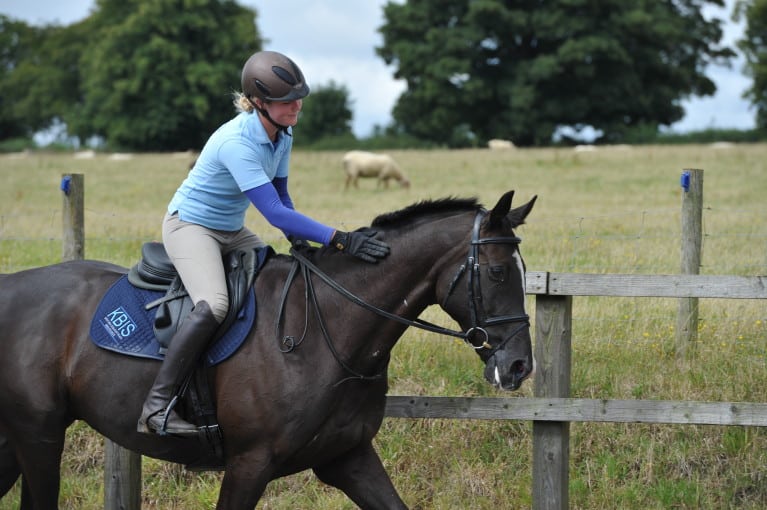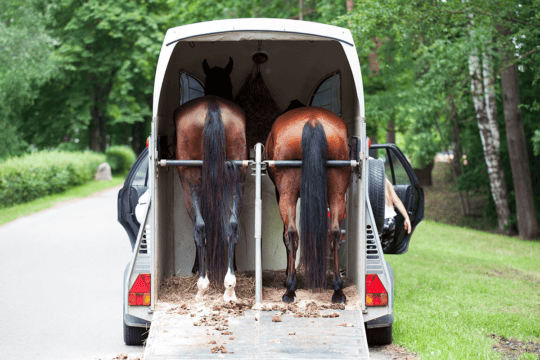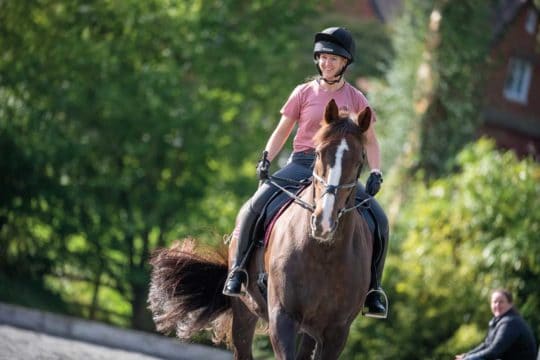A maze of jargon surrounds most insurance policies, but what level of protection do you really need? H&R’s Lisa Harris investigates…

Insurance is one of the bigger costs of owning a horse. Depending on his age, medical history and value, an insurance premium for one horse could be £1,000 per year. But if you choose carefully, you may be able to find much more affordable cover.
Choosing the type of insurance cover you need
Public Liability cover
We can’t escape the fact we live in a suing culture. If your horse were to inflict damage on someone, their property or cause an accident, the other party could claim compensation from you, so the minimum cover advisable is Public Liability insurance.
Public Liability usually offers financial protection of at least £1 million if someone claims damages from you, although you should always check the limit. If you’re a member of a society or charity, such as the British Horse Society or World Horse Welfare, you will get basic Public Liability cover with your membership, but it’s a good idea to check the details.
Vet Fees cover
A key policy inclusion for most owners is Vet Fees. This cover will pay out in the event of large vets’ bills – think colic surgery (around £5,000) or suspected fracture (an MRI scan is around £600). There is usually a maximum amount you can claim and most companies will require you to pay an excess (an amount of the cost you have to cover yourself).
Many insurers also offer cover for the cost of transport to and from a veterinary hospital and livery charges while there – you’d be amazed how quickly these stack up. Some will even cover the costs of alternative therapy treatments.
Getting useful vet fees cover can be tricky as pre-existing conditions will be excluded – this is frustrating if your horse has a degenerative disease. Recurring problems or chronic illnesses tend to be the most expensive and if they are removed from your policy, you could end up paying for insurance as well as vet bills which kind of defeats the object.
Before they will cover you, some insurers require a two or five-stage vetting, leg X-rays, a copy of a loan agreement, purchase receipt and/or a letter to justify the horse’s market value among other things. If the paperwork is not in order when you come to a claim, you may find the insurer won’t pay out.
Personal Accident cover
Personal Accident insures you, or anyone riding your horse with your permission, for death, injury and permanent total disablement – sounds dramatic, but how many people do you know who have had serious riding accidents? Exactly.
If you let other people ride or handle your horse, this type of cover is advisable as you could be liable if they’re injured when interacting with him. To ensure you’re properly covered, it’s a good idea to declare any existing medical conditions of anyone who interacts with your horse.
Other levels of cover
Permanent Loss of Use pays out if your horse can no longer be used for the activities you have insured him for – for example, if he can no longer be ridden, but the vet doesn’t recommend that he should be put down. If your horse can still be used for breeding, most insurers will only pay out a percentage of the sum he’s insured for and most companies won’t cover horses over 15 years of age for ‘Permanent Loss of Use’.
Death of Horse pays out in the event of your horse’s death due to accident, illness or disease. Sometimes this includes the cost of removal and disposal of the body. Most insurers provide the minimum cover of ‘Death’ and ‘Theft and Straying’, then give you the option of additional extras to your policy.
Theft and Straying pays out in the event your horse is stolen or strays and is not recovered within a certain period (usually 60-90 days). In order to claim, you must have informed the police of your horses’s disappearance. Costs incurred advertising his loss may also be included in the coverage.
Saddlery and Tack covers the cost of replacing lost, damaged or stolen tack. It’s common to have an excess with this type of policy and cover can be ‘New For Old’ or ‘Standard’ (used market value). Extras – for example, rugs – may also be included.
Trailers and Horse Drawn Vehicles covers fire, theft, accidental damage and public liability (when the vehicle is not in use). When in use, public liability should be covered by the towing vehicle’s insurance. Most insurance companies require you to fit a security device to the vehicle when it’s not in use and an excess is common with this type of cover.
Negotiate with your insurer
It’s always worth negotiating with an insurer and discounts are often available for multi-horse policies. If you want to travel your horse abroad, check whether you are covered while outside the UK as some companies will include this at no extra cost.
All insurers have an upper age limit on their standard policies, so if your horse is getting on, expect finding an insurer to take longer and be more costly. When a horse reaches his ‘veteran’ years – usually between 15 and 20 years – cover is often reduced to accidental external injury only for ‘Death’ and ‘Vets Fees’.
The cheapest policy is not always the best value – it’s also a good idea to do a little research into a company before committing to a policy as some have better track records than others.
TOP TIPS
1. Increasing the excess amount can reduce the overall cost of a policy, but make sure you can afford to cover it.
2. Underwriters may remove an exclusion after a certain period if your vet confirms in writing the condition has not reccurred.
3. If you are involved in an accident, do not admit liability. Contact your insurer first and they will advise you.
4 . If you aren’t happy, all insurers must refund your premium in full if you cancel within 14 days from the start of cover.












